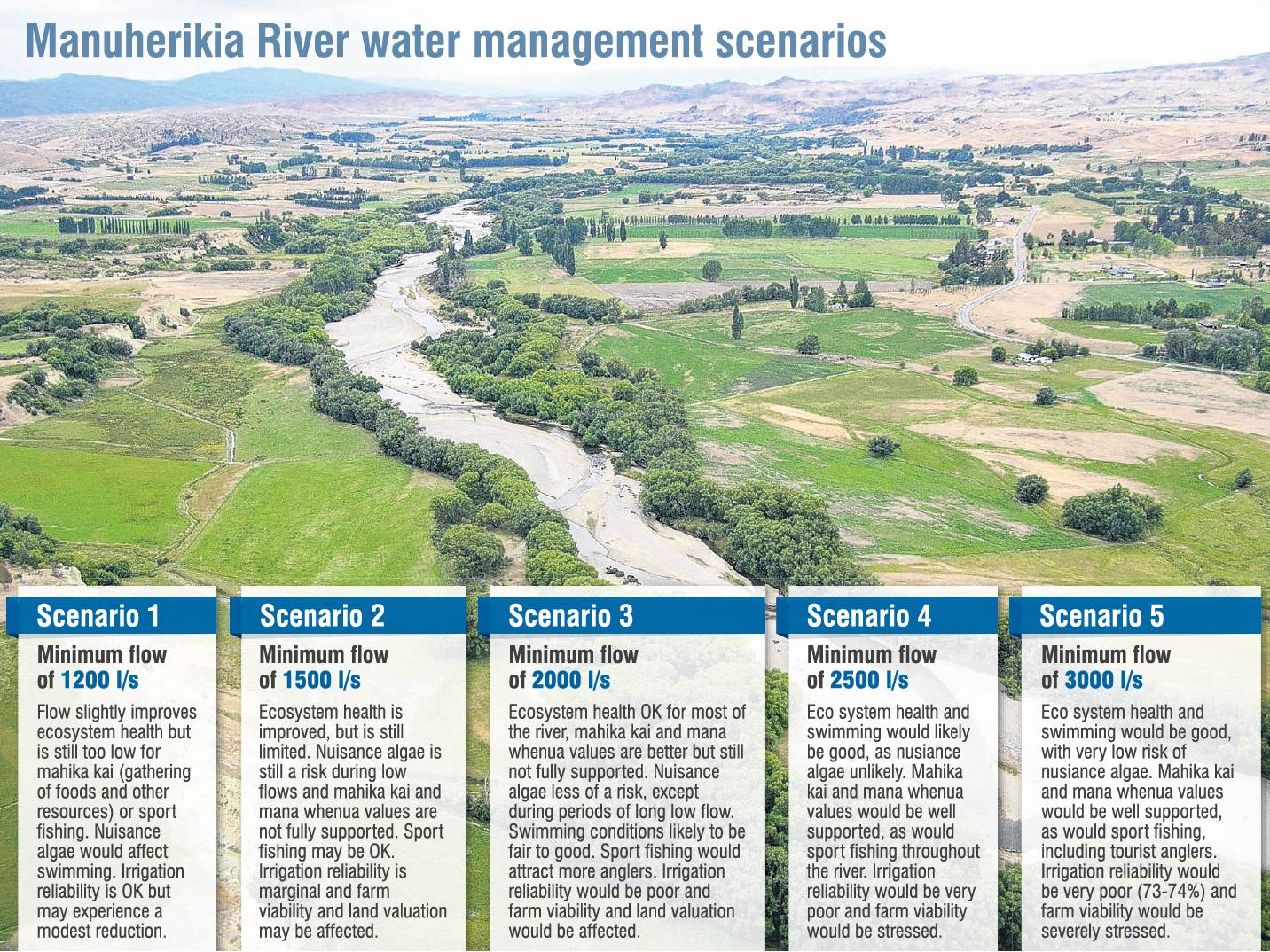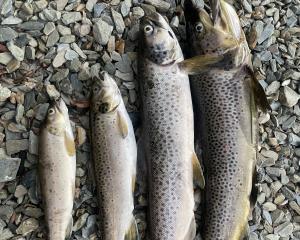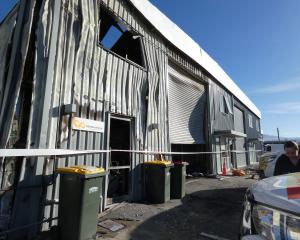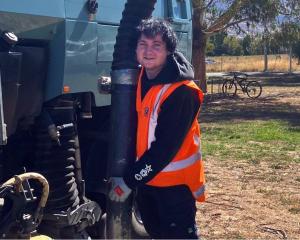
A report detailing negative economic and employment impacts of five minimum flow options for the degraded Manuherikia River has been released ahead of today’s first public consultation on the issue.
The report by independent economist Benje Patterson is dated March 29 and was commissioned by the Central Otago District Council.
The options were released last week by the Otago Regional Council, which is consulting on river management.
Mr Patterson said any changes to minimum flows "will alter farm-level practice for those reliant on irrigation, as well as have downstream influences on supply chains and household spending patterns".
The five options range incrementally from 1200 litres per second (option one) to 3000 litres per second (option five), and have been criticised by parties debating the future of the river.

Option five is supported by environmental groups such as Forest and Bird and the Central Otago Environmental Society.
Otago regional councillor Gary Kelliher said last week the options did not narrow "the gulf-sized chasm" between environmental groups and irrigation users.
Increasing the minimum flow to 3000 litres per second would reduce irrigation reliability by 73%-74% and farm viability would be severely stressed, according to documents on the regional council’s website.
Central Otago Mayor Tim Cadogan said yesterday the issue was important, and at least 305 jobs were at stake.
"Please pause for a moment and think what else will change as a result of less employment [and] how will this affect populations in our smaller communities, school [rolls] and the availability of services," Mr Cadogan said.
Mr Patterson said the impacts of any changes stretched beyond just those directly employed on farms in the catchment, he said.
In a year of average rainfall, irrigated farmland in the Manuherikia catchment directly provided for $17.6 million in GDP and 180 jobs, Mr Patterson said.
This economic activity indirectly created an additional $10.2 million in GDP and another 125 jobs in Central Otago.
Including horticulture and viticulture data would increase the figures, Mr Patterson said.
"During a dry year, the impairment to Central Otago’s total GDP across both direct and downstream channels from irrigated farming in the catchment could be as much as a 50% reduction in a 3000 l/s scenario, compared to the status quo benchmark.
"Under a 1500 l/s minimum flow regime, the total reduction in the catchment’s contribution to Central Otago’s GDP would be 9.8%," Mr Patterson said.
Mr Cadogan said the district council realised the effect of minimum flows on employment and economic activity was only part of the picture.
"This economic analysis has been undertaken to make sure the best information possible is available for community consideration," Mr Cadogan said.
Mr Patterson’s report is on the district council website.
An independent review by Compass Agribusiness of the regional council’s economic modelling and land use modelling is also online.
Feedback sessions
Alexandra Community Centre/Memorial Hall, today 1pm-8pm (staff presentations 2pm and 7pm).
Omakau Hall, tomorrow, 1-6pm (staff presentation 2pm).
Comments
Money versus Environment? Short term gain versus Long term prosperity? Jobs versus Ecosystems? Industrial Agriculture versus Nature? Farmers versus Indigenous people food gathering rights? Human greed versus Biodiversity crisis?
Under new Government freshwater policy introduced last year, regional councils must place the health and wellbeing of water bodies before that of people and communities. It is certainly going to be interesting to see what the council decides! Will they compromise the environment for economic benefit and in doing so risk yet more costly Environmental Court action?
And what food do Indigenous People gather in the Manuherikia River? Introduced trout?












